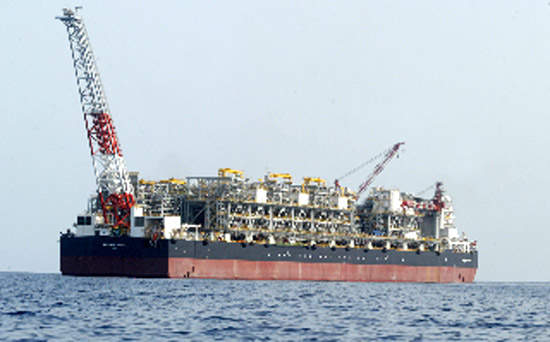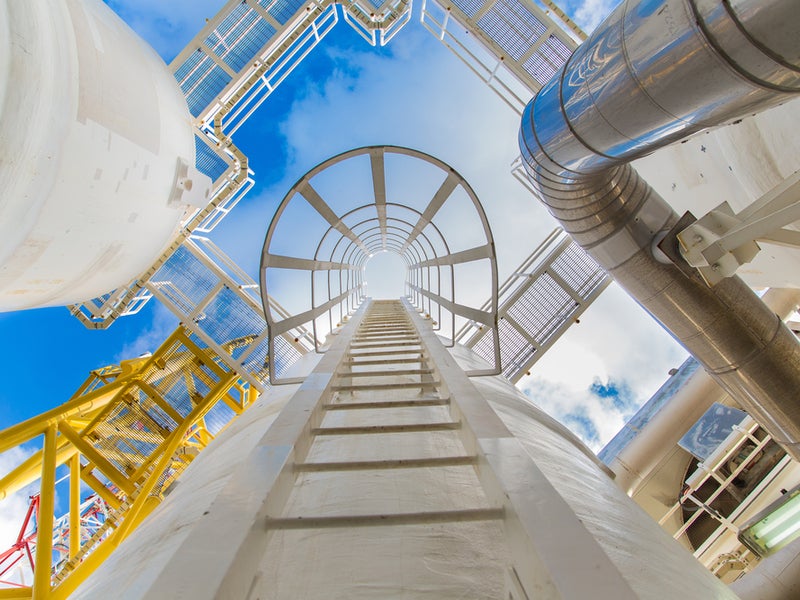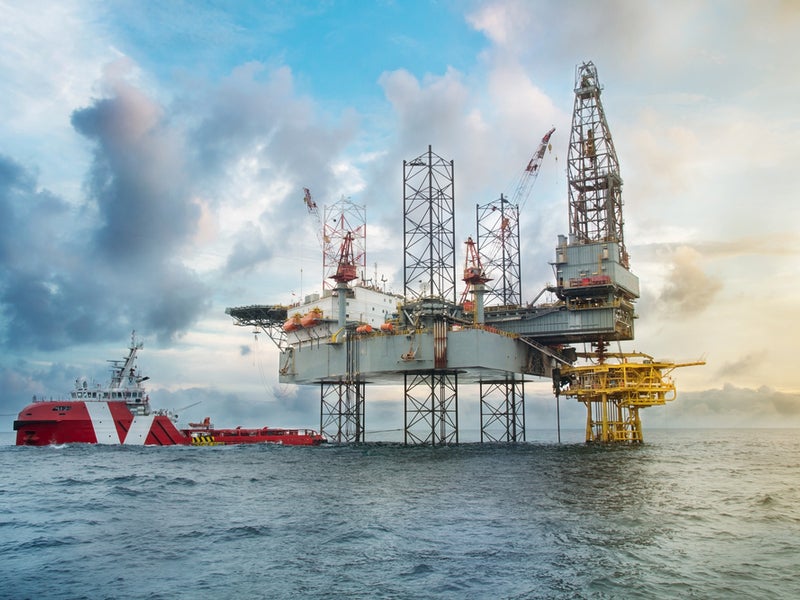The $3.5bn Agbami oilfield project is one of Nigeria’s largest deepwater developments.
The field spans across oil mining lease (OML) 127 and OML 128, approximately 354km south-east of Lagos and 112km offshore Nigeria, in the central Niger Delta.
Texaco and Nigerian independent oil company Famfa were granted exploration rights to the 617,000-acre block 216 in late-1996.
Agbami was proven in this block by Texaco in 1998 and two years later Statoil’s Ekoli-1 well confirmed that the discovery extended into block 217.
The average net daily production from the field in 2019 was 90,000 barrels of crude oil and 14 million cubic feet of natural gas.
Chevron has a 67.3% interest and operates the field via its Nigerian affiliate, Star Deep Water Petroleum. The remaining working interests are held by Equinor (20.21%) and Petrobras (12.49%).
The field is owned by the terms of a deepwater production-sharing contract (PSC) between Chevron and Famfa. The production licenses for the field will expire in 2024.
Agbami field discovery
The field was discovered by the Agbami-1 well in January 1999, which encountered 420 net feet of pay in multiple oil zones from 8,200ft to a total depth of 12,400ft.
It penetrated stacked reservoir sands saturated with oil, ranging in overall column thickness from 400ft to over 1,000ft.
The quality of the oil from these zones is 35°-45° API gravity with very low sulphur content.
On 15 July 1999, the well was spudded in 4,700ft of water, making it the deepest well in Nigeria.
It reached its total depth in late November 1999 and was temporarily suspended to allow for flow testing and possible production at a later date.
Agbami field appraisal details
Texaco drilled the Agbami-2 appraisal well with the drillship Glomar Explorer in January 2000. This confirmed the size of the Agbami structure.
The Agbami-2 appraisal well was drilled in 4,800ft of water to a total depth of 15,683ft.
The well encountered 534ft of pay in five separate oil-bearing zones, including one that flowed at a maximum rate of 10,000 barrels per day (bpd) with a well-head pressure of 2,200lb per square inch (psi).
Various surface equipment limitations prevented a higher flow rate.
Oil from the reservoir is light, sweet crude (45° API gravity) with very low levels of contaminants such as vanadium, nickel and iron.
The total reserves of the Agbami oilfield are estimated at approximately one billion barrels of oil equivalent.
Agbami field development details
Agbami was developed with a subsea production system tied back to an FPSO.
The field became operational in July 2008 and reached its peak production rate of 250,000bpd in August 2009.
A ten-well development programme was planned to increase crude oil production capacity to compensate for the field’s decline.
The drilling of the wells began in May 2010. The first three phases of development were completed and additional infill drilling was conducted in 2019 to counter the declining output from the field.
Pacific Drilling’s rig Pacific Bora began operations at the Agbami oilfield in August 2011 under a three-year contract.
Agbami FPSO
The FPSO was built by South Korea’s Daewoo Shipbuilding & Marine Engineering.
Daewoo awarded the contract for engineering design and procurement services for the topsides to KBR and the class contract to ABS in 2005.
The Agbami FPSO cost $1.2bn to construct and features an overall storage capacity of 2.15 million barrels of crude oil.
It originally arrived amid secrecy at the field at the end of 2007 and is one of the largest facilities of this type ever built.
The Agbami development is expected to be of value to less-complex refiners, especially those with no vacuum residuum conversion.
It has 13 topside modules containing the main process and utility systems. Weighing approximately 30,000t, the vessel topsides generate 75MW of power and have accommodation for 100 personnel.
The FPSO is moored in about 4,800ft of water and it is expected that at least 40 subsea wells will be necessary to fully exploit the field.
It can handle 250,000bpd, 450 million cubic feet of gas production and 450,000 barrels of injected water a day.
The FPSO was designed to store approximately 2.2 million barrels of oil and is scheduled to be on location for over 20 years.
Agbami is expected to be of value to less-complex refiners, especially those with no vacuum residuum conversion, limited hydrotreating / sulphur recovery and limited cracking capacity.







